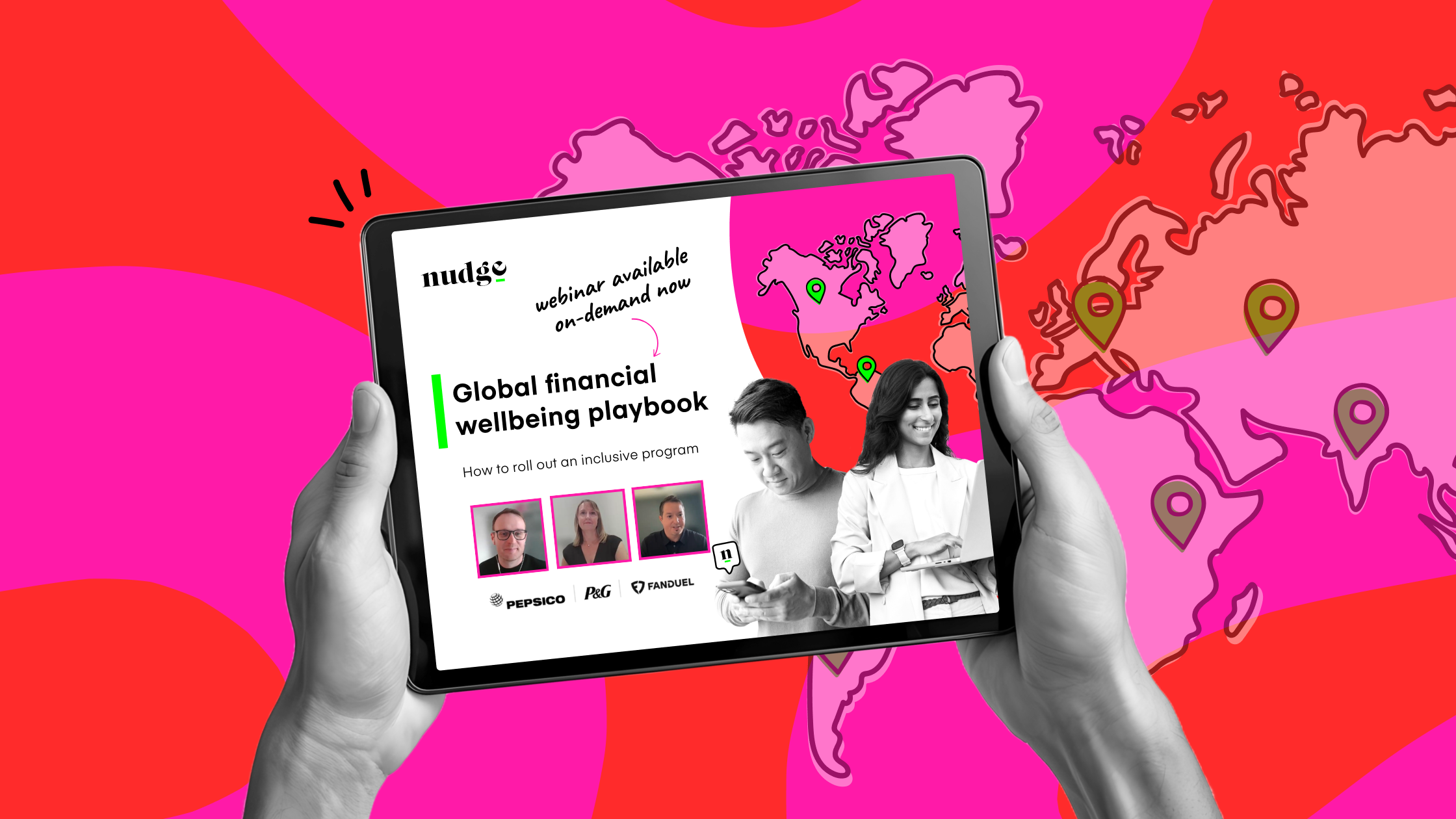Global financial wellbeing programs: lessons from leaders
2 min read

Global financial wellbeing program planning: lessons from industry leaders
We had the privilege of chatting with industry leaders from PepsiCo, P&G, and FanDuel to uncover their secrets to successfully implementing a global financial wellbeing program. Let’s dive into the valuable insights.
Identifying business needs and objectives
“When we rolled out a financial education program, inflation was starting to go through the roof. That was a global problem. And studies have shown that if your employees are stressed with finances, it's going to filter into work life. We have a very diverse population and diverse benefits. But financial education was one thing that was missing and it's something that everybody needs.” Matthew Lopez from FanDuel.
FanDuel’s objective was to firstly align financial and mental wellbeing. The keys to success are engagement, smooth implementation and effective communication. P&G focused on improving financial literacy through education and communication, while also offering global financial security benefits.
“We had different flavors of financial wellbeing. Really robust in some markets. Not as much in others, and in some it didn’t exist. We needed to make sure that we have a globally consistent experience for all our associates.” Barry O’Brien from PepsiCo.
PepsiCo’s approach focused on providing a globally consistent experience, with a strong emphasis on localized financial education to help employees build long-term financial resilience.
Aligning with global strategies
Forde explained how P&G aligned its financial wellbeing program with their broader benefits strategy. Financial wellbeing was a key pillar, ensuring employees were equipped with financial literacy skills and the ability to manage long-term savings and emergency funds. This alignment helped secure buy-in from leadership and funding for the program.
O’Brien emphasized the importance of education in their strategy, providing impartial financial guidance to employees. PepsiCo integrated their financial wellbeing efforts with their Employee Assistance Program (EAP) to ensure seamless support for financial and mental health.
“Within the ecosystem we have some of our partners come together and cross promote each other. We've also got the EAP data outlining the need for nudge and promoting nudge supporting the education required to better use the EAP.” Barry O’Brien from PepsiCo.
Data-driven insights
Data plays a huge role in shaping financial wellbeing programs when aligning globally. O’Brien recalled that the insights from their EAP revealed significant concerns around money management and stress. This data helped PepsiCo refine their financial wellbeing program to address specific employee needs, making the case for a long-term approach to financial wellbeing.
At FanDuel, Lopez described how they used data from their FanDuel U.S. financial wellbeing program to gain buy-in from other teams and companies within the group to help them expand the program globally. Connecting business needs to data-driven insights is essential to secure support.
“The successes from the U.S. program with nudge allowed us to use that as a template for other launches. That was something that we used to roll-out to multiple brands, and multiple countries.” Matt Lopez from FanDuel.
Leadership and stakeholder buy-in
Securing leadership buy-in is often a critical challenge in launching new programs. Forde shared how positive feedback from employees globally was pivotal in convincing leadership to support the program. Combined with the strategic importance of financial wellbeing made it easier to secure signatures for the global program. PepsiCo’s approach involved taking the time to listen to employees worldwide, ensuring the program addressed their needs. By using data points that resonated with employee challenges, the team was able to build a strong business case for its financial wellbeing initiative.
Lessons learned on implementation
- Launching a financial wellbeing program globally requires a strong project leader. Forde stressed the importance of having a tenacious leader to drive the project and ensure success. At P&G, they centralized communications but engaged local partners to tailor messaging for their specific regions, ensuring relevance and impact.
- The need for creative communications to drive engagement. Continuing with the importance of communications, Lopez emphasized the need for creative communications to drive engagement. FanDuel launched a weekly baseball rookie card campaign highlighting new benefits after open enrollment and leveraged employee resource groups to spread the word.
- Ensuring accessibility, no matter location or job position. At PepsiCo, O’Brien shared how their communications strategy included customizing content with specific imagery and language for different regions. For their LATAM workforce, they created a custom nudge jingle that was shared across WhatsApp, making the initiative fun and engaging. For frontline workers, adapting communications and ensuring accessibility in every country was a top priority, including exploring innovative ways to deliver the program, such as sending postcards with QR codes to employees’ homes.
Program success and engagement
The panelists shared that the success of these programs was evident in the high levels of employee engagement. For FanDuel, Lopez noted that 80% of their employees returned to use the financial wellbeing platform multiple times, showing a lasting impact. O’Brien echoed this, reporting double-digit engagement rates and positive feedback from employees, who appreciated the support in managing their financial health.
Employers looking to launch or refine their own financial wellbeing programs can download the Global financial wellbeing playbook or learn from these examples by watching the webinar on-demand.